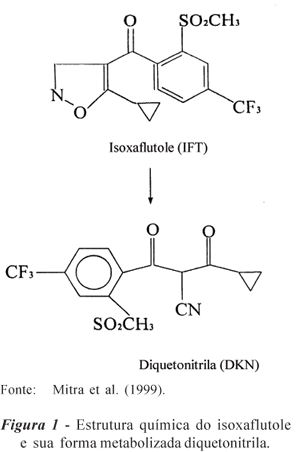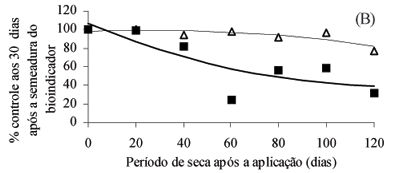This research was carried out to evaluate the residual activity of isoxaflutole applied under different conditions of simulated drought after herbicide application, in two soils of contrasting textures. Two experiments were simultaneously performed; in the first one rates of 0, 230 and 270 g ha-1 of isoxaflutole were applied to a heavy clay soil. In the second one, rates of 0, 180 and 200 g ha-1 were applied to a sandy clay loam soil. In both experiments, a 3 x 2 x 7 factorial combination (three rates, two bioindicators - Brachiaria decumbens and Panicum maximum, and seven drought periods after herbicide application - 0, 20, 40, 60, 100 and 120 days) was set, with four replicates. Visual control of bioindicators was evaluated at 15, 30, 45 and 60 days after sowing. Isoxaflutole was very stable on the clay soil (control >97%), despite the rates applied and bioindicator or drought periods evaluated. Herbicide stability was shorter at sandy clay loam soil, but consistent residual activity (control >80%) was persistent up to 50 days for B. decumbens and > 120 days for P. maximum. The results indicate that P. maximum is more sensitive to isoxaflutole than B. decumbens, and that residual activity of this herbicide was longer in clay soil.
bioindicator; climatic conditions; persistence












